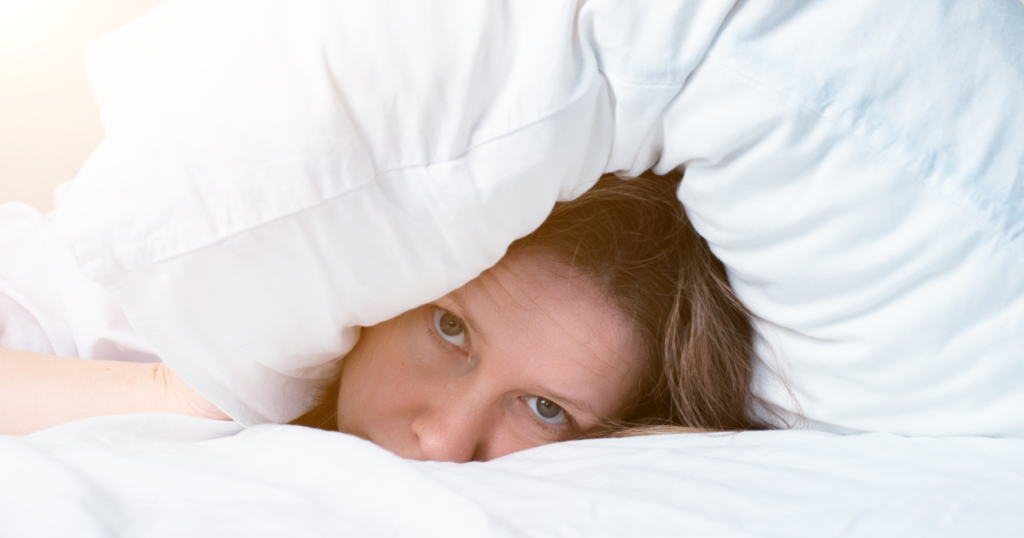Anxiety disorders and mood disorders are common. They affect people of all ages and walks of life. When someone suffers from anxiety and mood disorders at the same time, they’re diagnosed with comorbid anxiety and depression.
Four common questions about co-occurring anxiety and depression are:
- How often do they co-occur?
- Why do they co-occur?
- What’s the prognosis?
- What’s the treatment?
In general, comorbid conditions of all types are common.

One study found that about 50% of American adults with any psychiatric diagnosis have 2 or more disorders.
Co-occurring anxiety and depression are even more common than that.
Both conditions co-occur more often than the lifetime rates of either depression (16.6%) or anxiety (28.8%) alone. More specifically, about 60% of people with depression have comorbid anxiety, and 60% of people with anxiety have comorbid depression.
A natural next question is why anxiety and depression commonly co-occur.
Researchers do not know what puts someone at risk for comorbid anxiety and depression, compared with either condition by itself.
Theories range from biological explanations to situational life events. Another possibility is overlapping symptoms, such as insomnia, link the two disorders.
Some experts suggest that having one of the disorders is a risk factor for having the other.
Identifying causes for the co-occurrence is difficult. One reason for this is the different types of anxiety and depression.
For example, Major Depressive Disorder (MDD) and Generalized Anxiety Disorder (GAD) are highly comorbid. They also share four symptoms:
- Trouble sleeping
- Difficulty concentrating
- Being easily fatigued
- Restlessness
MDD and GAD are considered to have to similar genetic factors.
MDD and other anxiety disorders, such as Panic Disorder, are not considered to be linked genetically. They are less often comorbid.
Gender may be another risk factor. Females have a higher rate of each condition than males. And a higher rate of comorbid anxiety and depression too. (This could also be due to bias toward diagnosing women more often than men with the disorders.)
Age is yet another factor. Onset for anxiety disorders is much earlier than for mood disorders (11 years old vs age 30 years of age). Whether this affects comorbidity is unknown.
What is the prognosis for comorbid anxiety and depression?
Another version of this question is how comorbidity affects treatment outcome.
Remember that when anxiety and depression co-occur, they’re usually harder to treat. Why? Because the symptoms tend to be more persistent and intense when combined.
The prognosis for people with comorbid anxiety and depressive disorders is poorer than that for either disorder alone.
The more intense symptoms include increased risk of suicidality, more chronic symptoms, and more everyday impairment.
So, people with depression and anxiety have a worse response than people with depression or anxiety alone. Their illness tends to be more chronic.
So how do you treat the conditions when they co-occur?
Unfortunately there is no single best treatment.
Experts even disagree whether to treat one condition first and then the other (aka sequential treatment). Or, to treat both at the same time (aka simultaneous treatment).
Further, clinicians can recognize one mental illness relatively easily. But, it’s much harder to recognize comorbid illnesses. And to distinguish comorbid conditions from conditions such as Bipolar disorder or Substance Use disorder.
However, it is not all gloom and doom!
Medication-wise, selective serotonin reuptake inhibitors (SSRIs) are the treatment of choice in treating depression and comorbid anxiety disorders.
In general, the SSRIs and the Selective Norepinephrine Reuptake Inhibitor (SNRI) venlafaxine are first-line medications used in the treatment of both anxiety and depression.
Examples of SSRIs include sertraline, fluoxetine, citalopram, fluvoxamine, paroxetine. They’re preferred due to their treatment effectiveness.
One downside to SSRIs is they can intensify anxiety among already anxious patients. Clinicians thus tend to start patients at a low dose and then increase the dose over the first few weeks of treatment.
The most common psychotherapy approach is cognitive behavioral therapy, or CBT for short.
CBT is a here-and-now, solutions-oriented approach. It’s based on the idea that thoughts, feelings, and perceptions influence behavior. One of the cool things about CBT is that it is an effective treatment for either disorder. And for both when they occur at the same time.
With comorbidity, treatment providers have to make sure both disorders are being treated. For example, antidepressants may help a person’s mood, but not their anxiety. A next step may be to add CBT. Or to change the medication.
There’s still a lot to learn about recognizing and treating conditions that present at the same time. Especially in the case of anxiety and depression.
While treatment has more challenges when dealing with comorbidity, success is possible.
Dr. Elayne Daniels is a private-practice psychologist, international consultant, and coach. Over the last 25 years, she has helped people heal and deal with depression and anxiety. To learn more about how she might help you, contact her here.


